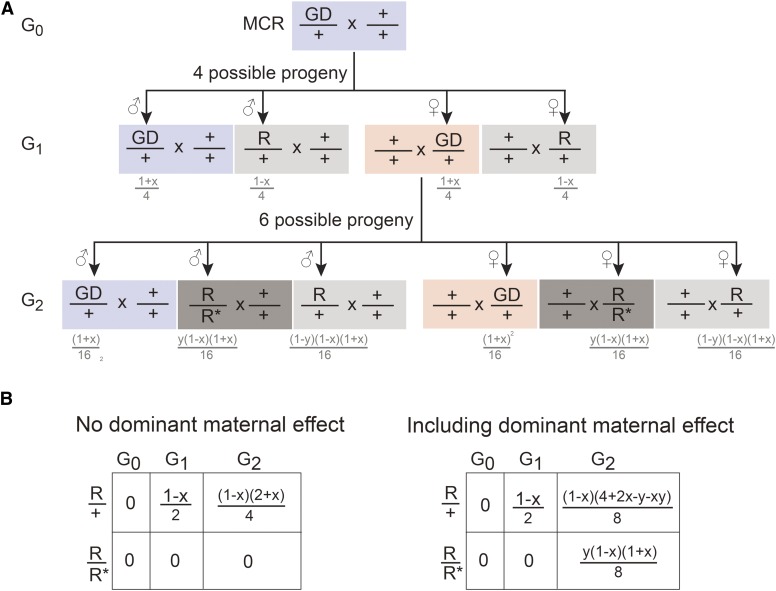Figure 4.
Dominant maternal effects could lead to rapid spreading of resistance with MCR-directed gene drive. (A) Shown are the possible progeny from a transgenic gene drive (GD), containing male animals crossed with wild-type females. If “x” indicates the successful rate of GD through MCR, then “‘1 − x” is the rate for acquisition of GD resistance by mutation at the target site in the next generation. The consequences of dominant maternal effects are shown in the G2 generation, when female individuals contain the MCR-directed GD. If “y” indicates the rate of mutation due to dominant maternal effect (leading to GD resistance), then “1 − y” is the unaffected rate. Homozygous resistance can occur in a single generation. See Figure S3 for additional details on calculations. (B) Summary calculations comparing GD resistance excluding or including dominant maternal effects when crossed to wild type. For example, if MCR-directed GD efficiency is 95% and maternal dominant effects lead to resistance at 87%, then in the G2 generation, heterozygous resistant animals (R/+) excluding or including dominant maternal effects is 2.6 or 3.7%, respectively. The frequency of homozygous resistant animals (R/R*) excluding or including dominant maternal effects is 0 or 1.06%, respectively. R denotes the generation of a resistant mutant through failure of MCR. R* denotes the generation of a resistant mutant obtained by a dominant maternal effect.

